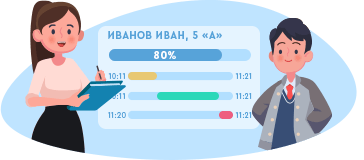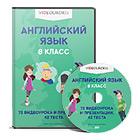In the lesson you will learn to do the following:
- to form positive/negative and interrogative sentences in Past Perfect Tense;
- to define the usage of Past Perfect Tense;
- to compare the usage of Past Perfect with Past Simple and Past Continuous Tenses;
- to use the Past Perfect in the given sentences and situations.
But first let’s consider the following situations and define the past tenses which were used in them.
On Tuesday Dora and James did the cleaning up when James came back home.
(James came and then they did the cleaning up together immediately.)
What tense form do we use to talk about the action that happened immediately one after the other in the past? Past Simple
On Wednesday Dora was doing the cleaning up when James came back home.
(Dora was still doing the cleaning up when James came.) What tense form do we use for a past action which was in progress when it was interrupted by another action? Past Continuous
On Saturday Dora had done the cleaning up when James came back home. (Here we see that she did the cleaning up first. And James came afterwards.) To show that one past action happened before another past action in the past we use the Past Perfect Tense. In other words, Past Perfect is “older” than Past Simple.
Formation

We form the Past Perfect Tense with the help of HAD and regular forms of the main verb (by putting the ending –ed to the main verb) or irregular forms of the main verb (using the list of irregular verbs or learning them by heart).
Example:
She had done/finished the cleaning up.
We form questions be putting HAD before the subject.
Example:
Had she done/finished the cleaning up?
We form the negations by putting not after HAD (had not or hadn’t for short)
Example:
She hadn’t done/finished the cleaning up.
Usage

As we’ve mentioned at the very beginning of the lesson we use the Past Perfect Tense for one past action which happened before another past action in the past. The action that happened earlier in the past (“older action”) is in the past perfect tense and the action which happened later (“younger action”) is in the Past Simple.
Example:
He bought a new car after he had saved enough money. (Had saved is older action, bought is a younger action.)
The fans were excited because their team had won. (The team had won first and the fan were excited afterwards.)
We also use the Past Perfect Tense to describe an action which happened before a stated time in the past.

Example:
The burglars had got away by the time the police arrived.
He had finished cooking by 10 o’clock.
(by the time the police arrived/ by 10 o’clock is a stated time in the past)
Past Perfect is used for an action which finished in the past and whose result was visible in the past.

Example:
He was happy. He had signed an important contract. (Had signed is the action which finished in the past, was happy is the result that was visible in the past.)
The Past Perfect is the past equivalent of the Present Perfect. Compare these two sentences.
He had broken his leg. He couldn’t walk. (The action had broken happened in the past and the result couldn’t walk was visible in the past, too.)
He has broken his leg, so he can’t walk. (The action has broken happened in the past and the result can’t walk is still visible in the present.)
Time expressions used with the Past Perfect include: before, after, already, till/until, by the time, never, for, since, just
Pay attention that we can use the Past Perfect or the Past Simple with before or after without any difference in meaning.
Example:
She left after she had finished her work. She left after she finished her work. (No difference.)
Complete the sentences using the Past Simple or the Past Perfect of the verbs in brackets.
1. The students left the classroom because the bell had rung.
2. David hadn’t finished the report by the time his boss arrived.
3. After she had seen a scary movie she couldn’t fall asleep
4. After they had delivered all the parcels they had lunch.
5. After he had won a big sum of money he bought a new house.
6. I felt happier. I had found a solution to my problem.
7. After a doctor had treated a child’s tooth, he gave him a toothbrush.
8. A dad was so angry because his son had broken the window.
Look at the pictures. Prepare a short story, using the Past Perfect or the Past Simple. The ideas below will help you.
Dora and Joe / want / go to the concert / last Sunday
they / buy tickets / two weeks before
Joe’s brother / promise / give a lift there
they / get stuck / traffic / because / accident happen
they / take a train
when / they arrive / concert finish
Dora / be very sad

Dora and Joe wanted to go to the concert last Saturday.
They had bought tickets two weeks before.
Joe’s brother promised to give them a lift there.
They got stuck in the traffic because the accident had happened.
They took the train.
When they finally arrived the concert had already finished.
Dora was very sad.
And finally let’s sum up what you’ve learnt at the lesson:
You know the way of formation of Past Perfect Tense (had+Ved/V2).
Then you’ve learnt to define the usage of Past Perfect and to differ it from other past tenses like Past Simple and Past Continuous.
Don’t forget about the time markers that also help us quickly to define the tense.

 Получите свидетельство
Получите свидетельство Вход
Вход




 0
0 1857
1857

